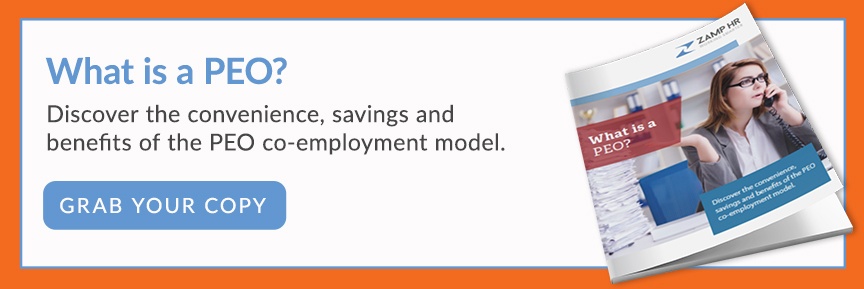Are your HR employees spending a disproportionate amount of time dealing with unemployment claims management? It's an unfortunate but common problem, especially after the outbreak of COVID-19. UI claims are expensive for companies in terms of money and time. Fortunately, there are several ways to manage the cost of an unemployment claim.
How to manage unemployment claims
There are seven primary ways to manage unemployment claims.
1) Workforce planning:
This strategy involves carefully planning the number of employees you need and their total working hours at any given time. You can do this through the following ways:
- Predicting your business needs
- Smart hiring
- Providing flexible scheduling options for both you and your employees
- Being aware of seasonal work positions
- Setting clear expectations
You can also identify employees who are likely to leave the company and develop a strategy for managing their departure. This will allow you to budget for the potential cost of UI claims effectively.
2) Document everything
It's important to document all the steps you take in managing your employees, including employee meetings, disciplinary actions for poor performance, and written warnings. This will make it easier for you to defend yourself against unemployment claims filed by your employees.
For example, suppose an employee claims they were fired unlawfully, but you kept a record of their disciplinary issues. In that case, the documents will justify the dismissal. This gives you a better chance of reducing or mitigating unemployment claims costs.
Failure to document means it's your word against theirs, and the chances are high that you could lose the claims in such instances.
3) Contest fraudulent UI claims
Maintain a culture of contesting fraudulent Unemployment Insurance (UI) claims immediately. Contesting is beneficial, especially when you have evidence that the employee was fired for misconduct, violating company policy, or voluntarily quitting without notice.
Notifications of an unemployment insurance claim should be made within one week of separation. It's also advisable to notify the state immediately while providing evidence against UI claims. This will give them sufficient time to investigate further and act quickly. You should avoid settling for less than what your business can tolerate!
4) Perfect your internal claims procedure
Once you know the steps to follow when contesting UI claims, take action. Make sure your employees know what is expected of them when they make unemployment insurance claims. Perfecting your internal UI process can help you save money by creating an efficient system for dealing with UI claims.
An excellent internal UI process should have the following characteristics:
- Straightforward and easy to follow: Make your UI process easy to follow and structured to avoid confusion.
- Readily accessible: Give your employees step-by-step instructions on filing for UI claims and keeping a record of them.
- Defined ahead of time: Know exactly how to manage UI claims and what actions you need to take. It should be clear in your company culture, employee manual, or communicated verbally.
- Includes the correct action steps: An effective UI process should outline the steps you need to take in dealing with UI claims. This includes reporting, contesting, and appealing claims.
- Provides support to employees: Your internal UI process should provide all the support needed for your employees through every stage of UI claims. This includes information on how to ask for a review of the claim and contest it if necessary
- Creates a better claiming experience: Creating a good UI process will help you communicate your company culture and policy around unemployment insurance claims.
5) Offer severance pay and outplacement services
Offering outplacement services means shorter UI benefits. The service supports unemployed workers through reemployment services, job placement, and cross-training opportunities.
Severance pay helps in delaying the start of unemployment insurance claims. They are beneficial since they provide financial reprieve to the affected employee.
In the long run, severance pay, and outplacement services complement your internal UI process and create a good company culture around UI claims. Even though severance packages vary depending on the industry, budgeting ensures you are mindful of your cash flow requirements and their impacts on your business.
6) Offer voluntary tax payments
Voluntary tax payments are considered as an act of goodwill towards your employees. Therefore, you can credit voluntary tax payments to offset losses during unemployment insurance claims.
Some states allow employers to contribute UI funds to help delay claims voluntarily. This is done by setting up a trust fund called Mutual Ex-Employer Plan (MEP). Through these trust funds, you can efficiently make voluntary tax payments into the employee's account.
Whenever the employee files for unemployment insurance, use those voluntary contributions to offset against their benefit claim. This is an excellent way to lower your taxes and consequently affect the total amount of benefits you payout.
7) Outsource your unemployment claims
Companies with a large workforce can benefit from outsourcing their UI claims management. Outsourcing allows you to focus on your core activities without worrying about UI claims or potential litigation.
A recent study on the pros and cons of outsourcing these claims showed that businesses can utilize the service and cut administrative costs by 60%.
UI Claims Management Does Not Have to Be a Burden
Unemployment claims management should never be a daunting task. You can outsource the service to a third party and leave the professionals to handle the work. The biggest benefit of this strategy is that it offers the best of all worlds. The ROI of outsourcing HR or claims management increases with more comprehensive outsourcing. This is because best-in-class outsourcing HR companies can efficiently handle payroll, benefits administration, and general administration burdens.



